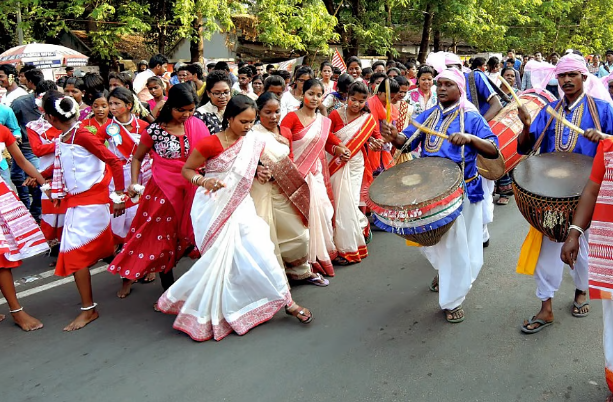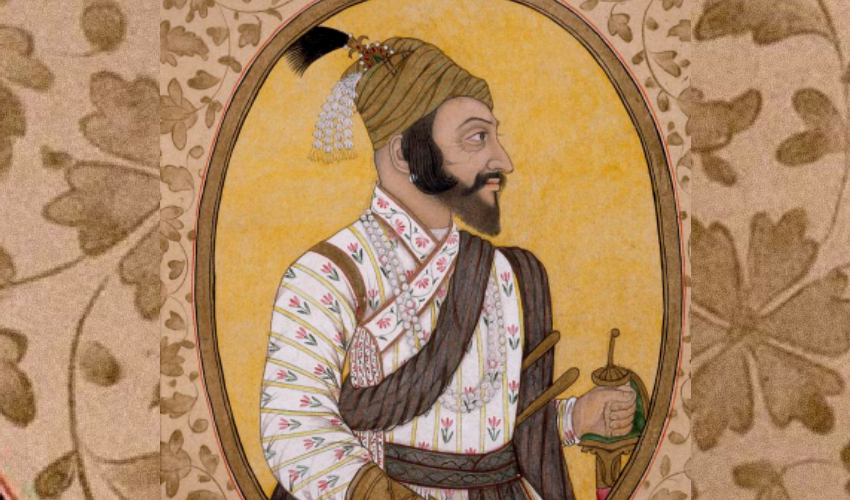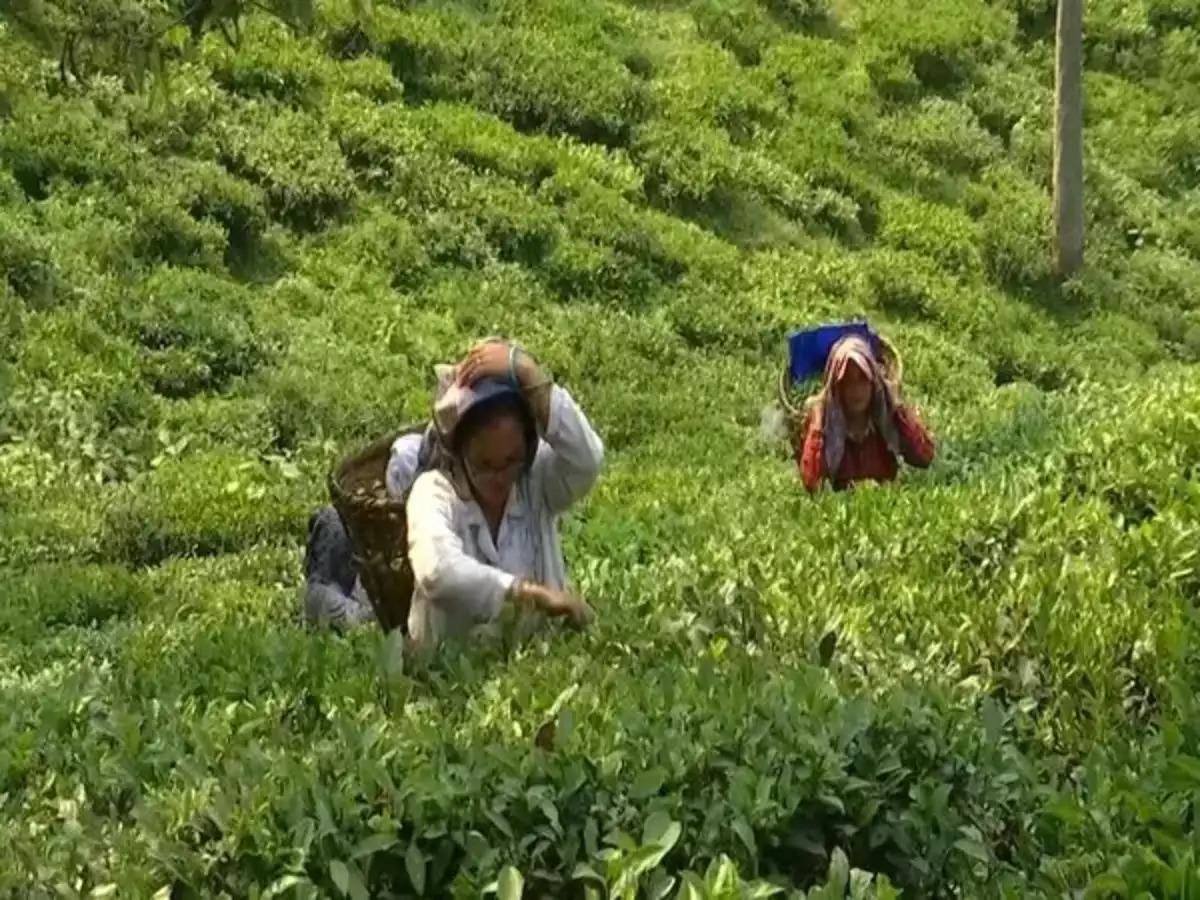
Different tribal groups in Jharkhand together with the Chhotanagpur region celebrate Sarhul as their festival for welcoming spring time as well as their tribal new year tradition. Through its nature-based nature Sarhul honors Sal trees as divine beings that connect cosmic Sun energy with Earth to enable agricultural growth and perpetuate biological existence. The festival combines sacred rituals together with dances as well as community meals to display tribal people's profound spiritual connection to their environment.
Key Points:
-
Worship of the Sal tree represents the core meaning of the word "Sarhul." People use Sarhul as an occasion to welcome the spring season while simultaneously starting the year according to the Adivasi calendar and recognizing the essential role of nature in providing life.
-
The Oraon, Munda, Santal, Khadia, and Ho tribes together with other Adivasi communities from Chhattisgarh, Odisha, Bihar and Assam, Andaman, Nepal, Bangladesh and Bhutan observe Sarhul the festival.
Significance of Sarhul:
-
The festival of Sarhul signifies the beginning of spring as well as the New Year since its name means "Sal tree worship".
-
Sarhul represents the essential cosmic binding that unites Earth and Sun since this connection drives agricultural production and biological existence.
Tribal Communities Involved:
-
Oraons Munda tribes share this festival together with Santal and Ho tribes through Jharkhand and Chhattisgarh, Odisha and Bihar, Assam and Andaman, Nepal, Bangladesh and Bhutan.
Role of the Sal Tree:
-
The Sal tree serves as the principal symbol of the festival since tribal peoples consider it the dwelling place of “Goddess Sarna”.
-
The essential nature of the Sarna Sthal worship depends on the present existence of at least 1 Sal tree in the sacred grove.
Rituals and Traditions:
-
During the observance the Pahan priest both fasts and measures how water travels through three clay containers in order to predict rainfall.
-
Three young roosters (fowl) are sacrificed to worship Singbonga and Dharmesh as well as the village deities and deceased ancestors during this religious ceremony.
-
Jadur together with Gena and Por Jadur serve as the traditional dance forms performed by the community members.
Community Celebrations:
-
The traditional celebrations involve musical performances combined with dancing and feasting activities while distributing rice beer (Handia) as sacred gifts.
-
The priest provides blessings to the inhabitants by using Sal tree flowers and holy water that represent health together with prosperity and safety.
Agricultural Importance:
-
Farmers wait for the festival completion as they begin their agricultural work only when the religious ceremonies end.
-
A blessing ceremony includes giving away Naur or Sarai, which happens to be the Sal tree's fruit to signify favorable agricultural harvests.
Cultural Significance:
-
The Adivasi community marks Sarhul through activities that both unite their social networks and reinforce indigenous cultural heritage as they deepen their environmental connections to natural habitats.
Conclusion:
The Sarhul festival represents more than tribal calendar celebrations because it fully demonstrates the indigenous communities’ strong emotional connection with nature. Through the festivities the community demonstrates its religious bond with nature and its domains of agriculture and universal cosmos. Sarhul embraces rituals combined with dances and communal participation to maintain cultural solidarity while drawing attention to both the natural importance of the Sal tree together with the regular seasonal progression. The festival stands as a crucial opportunity to emphasize both nature conservation and ecological equilibrium with the environment.



 Stalin Launches Kalaignar Kaivinai Thittam as an Alternative to PM Vishwakarma Scheme
Stalin Launches Kalaignar Kaivinai Thittam as an Alternative to PM Vishwakarma Scheme Unlocking India’s $25 Billion Export Potential in Hand and Power Tools Sector: NITI Aayog’s Strategi
Unlocking India’s $25 Billion Export Potential in Hand and Power Tools Sector: NITI Aayog’s Strategi Synergising Hydrogen Generation and Electricity Storage: A Pathway to India’s Net-Zero Future
Synergising Hydrogen Generation and Electricity Storage: A Pathway to India’s Net-Zero Future How Make in India is Transforming India's Global Pharmaceutical Footprint
How Make in India is Transforming India's Global Pharmaceutical Footprint The Radical and Enduring Legacy of Shivaji Maharaj – A Pioneer of Governance and Military Strategy
The Radical and Enduring Legacy of Shivaji Maharaj – A Pioneer of Governance and Military Strategy From Farm to Retail: Make in India’s Food Processing Revolution
From Farm to Retail: Make in India’s Food Processing Revolution ADB-Funded SMILE Program to Enhance India's Logistics Efficiency
ADB-Funded SMILE Program to Enhance India's Logistics Efficiency India Achieves Significant Milestone in Global Tea Industry, Becomes World’s 2nd-Largest Exporter of
India Achieves Significant Milestone in Global Tea Industry, Becomes World’s 2nd-Largest Exporter of Green Iron: A Billion-Dollar Opportunity and the Challenge of Winning It
Green Iron: A Billion-Dollar Opportunity and the Challenge of Winning It






